A question that many farmers and ranchers will face in their lifetime is what business structure best suits their farming/ranching operation. The three main options available in Alberta are to run the operation through a sole proprietorship, a corporation, or a partnership. While this decision is best made on an individual basis with legal and accounting advice, a basic knowledge of each structure is a good first step.
Business Structure #1: Sole Proprietorship
To run a farming/ranching operation through a sole proprietorship means one individual owns the business and the business has no separate legal identity from the owner. The individual will receive and be taxed at personal income tax rates on all income generated by the business. The individual will also incur debts on behalf of the business and assume all risks of the business.
The main advantages of this business structure are it is relatively simply, cost effective and allows the farmer/rancher to maintain complete control of their operation. Also, if the farmer/rancher’s primary source of income is farming or a combination of farming and another source of income, farming losses may be deducted against other sources of income.
The main disadvantage of this business structure is the individual may be personally liable for debts of the operation, meaning a creditor may be able to seize personal assets of the individual to satisfy a farm/ranch debt.
Business Structure #2: Corporation
The creation and existence of corporations are governed by the Alberta Business Corporations Act. Similar to a person, a corporation is a legal being that can earn money, incur debts, own property, enter into contracts and sue or be sued.
Incorporating a corporation involves submitting required documents to the province and paying a fee. Consideration must be given to key elements of the corporation, such as its name, share structure, directors and officers and bylaws. Once approved, the province will issue a certificate of incorporation.
Once a corporation is formed, if the farmer/rancher has an established operation, they may be able to choose which parts of their operation to put under the corporation. For example, it may be possible to leave the land in the individual’s name and have the corporation lease the land from the individual, while still moving the cattle and machinery into the corporation’s name.
By moving the farming/ranching operation to a corporation, the farmer/rancher does not lose access to the rollover rules in the Income Tax Act. Where the requirements are met, the rollover rules allow farmers/ranchers to avoid or lessen taxable capital gains that would otherwise result from disposition of farm property. The rollover rules do so by allowing the farmer/rancher to sell or transfer farm property (which includes shares of a family farm corporation) to a child, grandchild or great grandchild for less than fair market value.
The farmer/rancher also does not lose access to the lifetime capital gains exemption. Where the requirements are met, this exemption allows farmers/ranchers to claim an exemption for a specified amount of taxable capital gains resulting from the sale of farm property (such as the shares a family farm corporation), thereby reducing tax liability. However, one notable difference is that if an individual sells farm property, such as land or buildings that meet the required criteria, they may be able to utilize the lifetime capital gains exemption, but if a corporation sells such assets, it cannot claim the lifetime capital gains exemption.
The two main advantages of operating a farm/ranch through a corporation are:
- Tax deferral: The income tax system in Canada is designed to ultimately levy the same amount of taxes whether income is earned personally or through a corporation. However, the amount of taxes levied up front differs depending on whether the income was earned personally or through a corporation. Income earned by an individual will be taxed at that individual’s tax rate. Active income earned by a corporation will be subject to corporate tax rates, which tend to be lower than individual tax rates. Once the income is paid to an individual from a corporation as wages or dividends, it will be subject to further taxes. Prior to the money being paid out via wages or dividends, there will typically be more after tax dollars retained than there would be if the money was earned by an individual. This leaves more money to invest in the farm/ranch than would be available if the income was earned by an individual and subject to a higher tax rate upfront.
- Reduced liability: If a debt is incurred by a corporation, the corporation’s creditors generally cannot seize the personal assets of the individual running their farm/ranch operation through the corporation unless the individual gave a personal guarantee for the loan of the corporation.
The two main disadvantages of operating a farm/ranch through a corporation are:
- Costs of the Corporation: Starting and operating a corporation involves added fees, including the cost of incorporating, maintaining necessary corporate records, filing required documents, and legal and/or accounting assistance.
- Offsetting of personal income: When a farming/ranching operation is run through a corporation, any business losses of the corporation cannot be used to offset the farmer/rancher’s personal income. This disadvantage will be more heavily felt by farmers/ranchers who derive significant income from non-farming related sources.
Business Structure #3: Partnership
In Alberta, partnerships are governed by the Partnership Act. A partnership involves carrying on business in common with one or more persons with a view to profit. A partnership can be established by entering a Partnership Agreement, but a relationship can also be deemed to be a partnership under the Partnership Act.
A few noteworthy aspects of partnerships are as follows:
- Liability: Each partner is jointly liable for the debts and obligations of the partnership so long as certain requirements are met. This can be an advantage, as the liability for debts is shared amongst more than one farmer/rancher as opposed to one farmer/rancher being solely liable. It can also be a disadvantage, as the farmer/rancher can be held liable for debts their partner incurred in the name of the partnership.
- Taxes: Income generated by a partnership is split amongst the partners and reported on their respective income tax returns, meaning no separate income tax return must be filed for the partnership. While simpler than the income tax process associated with corporations, the farmers/ranchers miss out on the tax deferral opportunity associated with corporations.
- Rollover provisions and lifetime capital gain exemption: An interest in a family farm partnership may constitute farm property, meaning both the rollover rules and the lifetime capital gain exemption could potentially be utilized.
If you are interested in learning more about any of these business structures or have chosen one and want to implement it, Stringam can help. Give us a call today to learn more.


